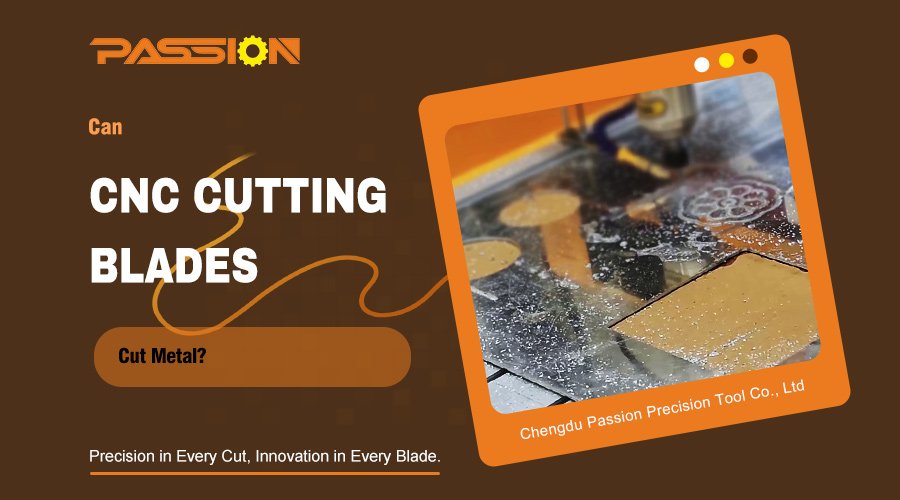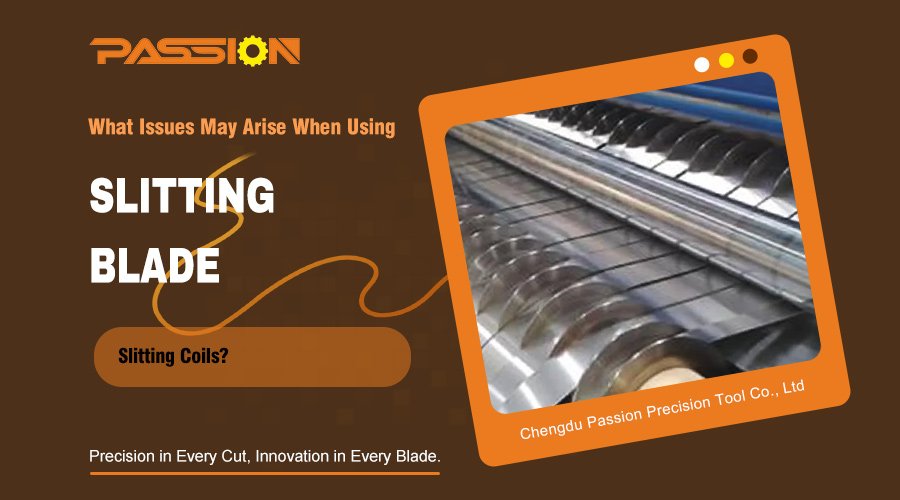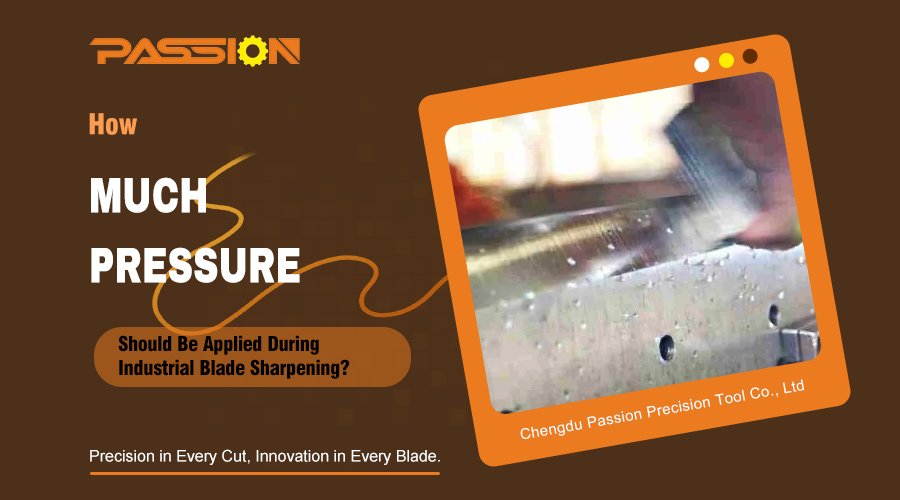Industrial blades as the core cutting parts of many processing equipment, its operating conditions directly affect the production efficiency, cutting quality and even equipment safety. However, many companies often ignore the daily maintenance of the blade, resulting in frequent equipment downtime, processing defective rate increases, and even safety accidents.
In this paper, we will systematically explain the ten aspects of industrial blade maintenance of important knowledge to help enterprises establish a standardized, scientific blade management system.
1. Why Is Blade Maintenance Critical?
Industrial blades are consumables, but they are not “disposable”. Proper maintenance not only extends the life of your blades, but also protects the quality of your processes and reduces your operating costs. The core value of blade maintenance is reflected in the following aspects:
Extend the service life of the blade: through cleaning, lubrication, resharpening and other means to avoid premature wear or corrosion of the edge, and improve the number of times of use.
Guarantee product quality: sharp and neat blades can keep the cutting edge flat and burr-free, and improve the product qualification rate.
Reducing equipment load and energy consumption: dull or damaged blades increase cutting resistance, overloading the host machine and shortening machine life.
Reducing safety risks: cracked or broken blades are highly susceptible to shattering at high speeds, causing personnel injury or equipment damage.
Saving operating costs: good maintenance reduces the frequency of replacements and unplanned downtime, resulting in significant savings in purchasing and repair costs in the long run.
Therefore, blade maintenance is not optional, but an important part of industrial production that must be integrated into process management.
2. Proper Daily Cleaning Of Blades
Cleaning is the most basic aspect of blade maintenance, but one that is easily overlooked. Material debris, oil, and gum left on the blade surface, if not removed in a timely manner, will not only affect cutting efficiency, but may also corrode the blade and accelerate edge wear. The correct way of cleaning should include:

Cleaning after disassembly: the blade should be disassembled after the equipment stops and cools down, never clean it during operation.
Choosing the right cleaning agent: select a neutral or weakly alkaline solution according to the material to be cut, such as alcohol or degreaser for removing paper glue residue, and avoid using strong acids or alkalis.
Use soft cloth or plastic scraper: avoid using steel brushes and metal tools during the cleaning process to avoid scratching the surface or edge of the knife.
Thorough drying: after cleaning, it is necessary to use a dry cloth to wipe dry and place it in a ventilated place to dry, avoiding water vapor residue triggering rust and corrosion.
Regular cleaning after daily shifts not only keeps the blade in a hygienic state, but is also an effective time to detect early damage.
3. Regular Inspection For Edge Wear And Cracks
While a quick inspection of the blade is recommended after routine cleaning, more in-depth periodic inspections (weekly or every 500 operating hours is recommended) are key to ensuring safe blade performance. Inspections include:
Bluntness of the edge: look at the edge through a magnifying glass for reflections, chipping and curling.
Whether cracks: especially carbide or high carbon steel blades are prone to fine cracks under high temperature or impact conditions.
Deformation or bending of the blade: irregular deformation will affect the balance of the installation, triggering abnormal noise and jumping.
Wear or deformation of the screw holes: any damage to the blade fixing holes may result in a poor installation and increase the risk of accidents.
Once found serious wear, cracks through, knife body structure loosening and other problems, should be replaced immediately to avoid operating with disease.
4. When And How Often Should You Regrind Blades?
Industrial blades are not meant to be used up or discarded, but can be resharpened to restore their cutting performance and improve economy. The timing of resharpening is particularly important.

Judgment Of Resharpening Time:
Cutting quality decreases: such as the appearance of rough edges, uneven cuts and other phenomena.
Cutting resistance rises: equipment load increases significantly, the noise becomes louder.
Visual or tactile detection of dullness of the edge: the edge is no longer sharp, or even touch with the hand does not cut.
Use time or piece counting to reach the preset life: according to different materials, set a reasonable warning life value.
Resharpening Frequency Recommendation:
- Carbide blades are resharpened every 3~5 times of use.
- High-speed steel blades 2~3 times.
- Ordinary carbon steel blades are recommended for one-time use.
Resharpening Precautions:
- Use professional equipment and technology to maintain the original geometric angle and kerf shape.
- Do not over-grind to avoid affecting the strength.
- After resharpening, re-balance test should be conducted to ensure that the dynamic balance is up to standard.
5. Blade Lubrication And Anti-Rust Protection
Especially in humid environments or when stored for long periods of time, blades are susceptible to corrosion, resulting in edge failure or blade damage. Therefore, lubrication and anti-rust protection is an indispensable part of blade maintenance.
Lubricant selection: It is recommended to use professional anti-rust lubricants or mechanical oils, avoiding the use of viscous or highly corrosive grease.
Oil application method: after cleaning and drying, use a soft cloth to evenly apply to the blade surface and edge, pay attention to thin and even, avoid oil accumulation.
Special material precautions: such as tungsten steel blade should not be frequently lubricated, but can be short-term sealed oil paper to save.
Humidity control: warehouse humidity should be controlled below 50% to prevent environmental moisture triggering rust.
At the same time, for some of the use of liquid cutting media working conditions, should be regularly tested whether the blade is subject to chemical corrosion, and timely neutralization and cleaning.
6. Proper Storage Of Industrial Blades
Improper storage can cause serious damage to blades, and even new blades may be obsolete. It is recommended that blades be stored in the following manner:
Sort and store upright or lying down: round blades should be placed vertically using a special knife rack, and sheet-shaped blades should be stored flat to avoid stacking.
Add a protective cover or partition: add a sponge pad or plastic plate between each blade to avoid friction and scratching between the blades.
Dust and moisture prevention: the storage environment needs to be clean, ventilated, dry and equipped with dust and moisture prevention devices.
Clear identification and registration: including blade number, material, specifications, date of purchase, has been used.
In particular, spare blades should be regularly checked for their condition to prevent aging or corrosion due to long-term idleness.
7. Blade Pre-Installation Inspection
Blades must be inspected twice before installation to avoid damage during storage, misuse of mismatched blades, which may affect the use of the blade.
Re-confirmation of specifications: Ensure that the blade matches the equipment to avoid mis-installation or reverse installation.
Check edge integrity: Make sure there are no new chipping, rust, or scratches.
Clean the surface of the blade: prevent oil from being brought into the body during installation.
Screw hole positioning: whether it is intact and free of burrs, whether the screw holes are clogged with impurities.
When possible, it is recommended to carry out dynamic balance test before machine, especially for large diameter circular knives used in high-speed running equipment.
8. Building Blade Maintenance Records And Lifecycle Management
Establishing a scientific blade maintenance record is a prerequisite for realizing predictive maintenance and full life-cycle management of blades.
The Contents Of The File Include:
Blade number, brand, material, and initial storage time.
The start and end time of each use, use time / cutting meters.
Records of each cleaning, resharpening and scrapping.
Failure and repair records.
Benefits:
Easy to trace problems: blade history can be queried if cut quality deteriorates.
Optimize purchasing plan: scientific stocking based on frequency of use and life statistics.
Enhance management efficiency: avoid duplicate purchases, overdue use, and missed inspections and replacements.
Help process improvement: analyze the relationship between blade life and process parameters through usage data.
It can be realized by using Excel table, MES system or tool module in ERP system, and it is recommended to update and export the analysis report regularly.
9. Handling Abnormal Conditions During Blade Operation
Even with proper maintenance, you may encounter various abnormal conditions during actual operation, such as strange noises, vibrations, poor cutting, etc. The quick identification and disposal of these phenomena is an important addition to maintenance work. Rapid identification and disposal of these phenomena is an important addition to the maintenance work.
Common Abnormalities And Disposal:
Abnormal noise: If the blade emits a sharp or periodic knocking sound during operation, it may be that the blade is loose, mounted off-center or has cracked, and it should be stopped immediately for inspection.
Increased sense of vibration: may be caused by the blade is not balanced, the mounting surface is not clean or the knife axis offset, need to recalibrate and clean.
Cutting offset or flare: mostly due to the edge is not sharp or the tool holder is not tightened, should check the state of the blade and the stability of the installation.
Cutting smoke or burning: indicates that the temperature of the blade is too high, should be shut down to check the cooling system, or replace the blade with a badly worn one.
Suggested Action:
Set up an operator exception log sheet to summarize typical problems.
Train operators to recognize blade abnormality signals.
Configure infrared temperature guns, vibration sensors, and other auxiliary tools.
Only in the use of the process of timely response to the problem, in order to avoid the evolution of small faults into large faults, to protect the equipment for a long time and stable operation.
10. Maintenance Differences For Various Blade Types
The structure, material and application environment of different types of industrial blades vary considerably, so maintenance should be tailored to the needs of each type of blade and should not be a one-size-fits-all approach. Based on industry experience, the following are a few common blade types of differentiated maintenance points:
The first is a Circular Blade (Slitter Blade), this blade is mainly used for continuous high-speed slitting, the dynamic balance of the requirements are very high. In the maintenance process, the focus should be placed on the dynamic balance of the blade inspection, especially before and after the use of the shaft runout measurement. If you fail to maintain the symmetry and rotational stability of the blade, it is very easy to produce violent vibration in operation, which in turn affects the cutting quality and equipment life.
Second is a Guillotine Knife (Long Straight Blade), commonly used in shear type processing, such as cutting strips, cutting, etc.. The straightness of the edge of this type of blade and the flatness of the mounting support surface is the focus of maintenance. Before and after each use, the blade should be checked for bending or edge chipping to ensure that it fits well with the blade holder to avoid localized damage to the edge due to uneven stress.
For Serrated Knife, mainly used for cutting plastic film, flexible materials, food packaging, etc.. This type of blade has a complex serrated structure, easy to accumulate cutting residue, if not thoroughly cleaned, will affect the neatness of the cut. It is recommended that the use of fine bristles or special tools for local cleanup, to avoid forcible scraping with hard objects to prevent damage to the edge.
The fourth category is Tungsten Carbide-Tipped Blade, the knife body is usually steel, the blade partially inlaid carbide. This type of blade cutting performance, long service life, but heavy impact conditions are prone to alloy shedding or weld cracking. In routine maintenance, you should focus on checking whether there are fine cracks in the welded joints, especially after experiencing high temperatures or strong impact loads, you should be more careful to check.
Finally, there is the Coated Blade, whose surface has been treated with coatings such as titanium, nitride, and fluorine to provide anti-sticking and anti-abrasion properties. Maintenance should pay special attention to avoid the use of corrosive cleaning agents and metal brushes, otherwise it is easy to damage the coating structure, resulting in the loss of special properties of the blade. Cleaning and lubrication should use neutral or weak alkaline non-corrosive materials.
To summarize, different types of blades due to its structure and use of different, in the maintenance strategy also need to be treated differently. Targeted management and differentiated maintenance is an important step in the life cycle management of industrial blades.
The performance of a high-quality industrial blade depends not only on the material and manufacturing process, but also on the later maintenance management. From daily cleaning to resharpening protection, from reasonable storage to data management, every aspect of blade maintenance is related to the stability of equipment operation and the core competitiveness of enterprises.
Although industrial blades are small, the maintenance system must be rigorous. I hope this article can establish a set of practical blade maintenance program for you to help production efficiency, cost reduction, safe and stable operation.








